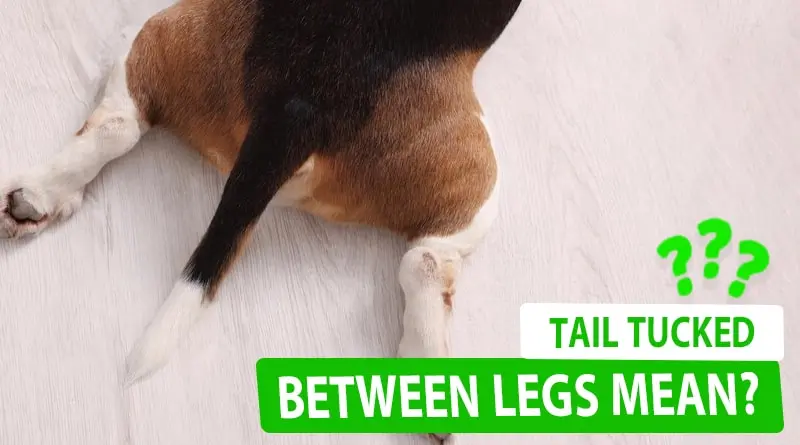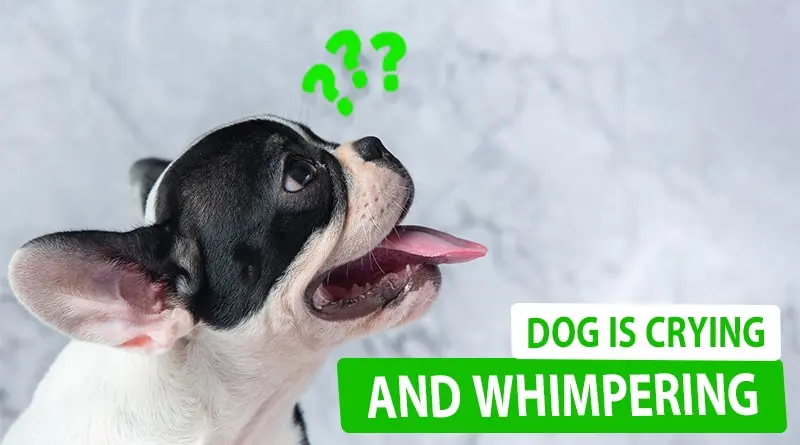When a dog shakes with its tail tucked between its legs, it often signals a mix of emotions, including fear, anxiety, or discomfort. Understanding the underlying causes is crucial for providing appropriate support and care for your furry companion. Here is the true and short answer to Dog Shaking Tail Between Legs:
Why is My Dog Shaking Tail Between Legs?
“If your Dog has a tail between its legs and acts weird, it shows it is fearful about something. It should also be due to an Injury, Health problem, or even a Flea Infestation”.
In this article (Dog Shaking Tail Between Legs), we’ll dive into the possible reasons behind this phenomenon and provide insights on how to address it.
Why is My Dog Acting Weird with Tail Between its Legs?

Due to various emotions, dogs may act strangely when their tails are tucked between their legs. This behavior is often linked to feelings of fear, insecurity, or submission.
It’s their way of communicating their discomfort or unease.
Possible Causes Explanation
Fear or Anxiety Common reason for tail tucking, indicates unease or fear.
Social Interaction Tucking tail in presence of other dogs signals submission, avoids conflict.
Pain or Discomfort Tail tucking may indicate pain, injury, or discomfort.
Past Trauma Dogs with traumatic history may exhibit fearful behaviors, including tail tucking.
Negative Association Tucking tail when encountering previously negative experiences or stimuli.
Sensory Sensitivity Reacting to stimuli not perceived by humans, leading to tail tucking.
Environmental Changes Significant changes like moving or new family members can induce stress-related tail tucking.
Genetic Influence Breed-specific traits may affect tail posture, influencing whether a dog naturally tucks their tail.
Health Concerns Tail tucking can signal underlying health issues, warranting a vet's evaluation.
Here is the Most Popular Question: “What Happens if a Dog Eats Too Many Dentastix? “
Why is my Dog’s Tail Vibrating?
A vibrating tail can be a sign of heightened emotions. When a dog is nervous or anxious, their tail muscles might tense up, causing a noticeable vibration. This is a physical manifestation of their emotional state.
Here are some potential reasons why your Dog’s tail may be vibrating:
1. Excitement
One of the most common reasons for a vibrating tail is excitement. Your Dog may be thrilled about something, such as walking, seeing their favorite person, or anticipating playtime.
2. Anticipation:
Vibrating tails can also signify a high level of anticipation. Your Dog may be eagerly awaiting something they know is about to happen, like mealtime or a game.
3. Positive Interaction
A vibrating tail can indicate positive social engagement and eagerness to interact when your Dog is in a social setting with other dogs or humans.
4. Strong Emotional Response
A vibrating tail can sometimes respond to strong emotions like joy, enthusiasm, or even mild anxiety.
5. Happiness and Contentment
A vibrating tail can signify a content and happy Dog. They may be enjoying their current situation or the company they are in.
Here is the Most Popular Question: “My Dog Ate Contact Lens: How to React? “
What Does Tail Tucked Between Legs Mean?

A tail tucked between the legs is a classic sign of submission or fear in dogs. It’s a self-protective posture, indicating that the Dog is trying to appear smaller and less threatening.
Understanding this body language is essential for recognizing when your Dog feels anxious or uncomfortable.
Behavior Meaning
Tail Tucked Between Legs Indicates fear, anxiety, or submission
Submission Sign of deferring to a more dominant individual
Fear or Anxiety Protective response, making the dog appear smaller
Seeking Comfort Dog looks for reassurance and support from owner
Avoidance of Confrontation Signals a desire to avoid conflict or threat
Response to Negative Stimuli Reacting to intimidating or unfamiliar stimuli
Physical Discomfort May indicate pain or discomfort, protecting rear end
Submission to Humans Displayed when perceiving a person as dominant
Temporary Response Behavior is a short-term reaction to a specific situation
Communication Signal A way for dogs to express their emotional state
Here is the Most Popular Question: “Why Does My Dog Keeps Stretching Neck and Looking Up? “
Different Reasons a Dog Shaking Tail Between Legs and Acting Weird
There are several potential triggers for a dog exhibiting this behavior:
- Fear or Anxiety: Loud noises, unfamiliar environments, or threatening situations can induce fear in dogs, leading to this posture.
- Pain or Discomfort: Physical discomfort due to injury or illness can cause a dog to tuck its tail to protect itself.
- Social Interactions: Dominant or aggressive dogs in the vicinity can make a more submissive dog tuck their tail in response.
- Past Trauma: Dogs who have experienced trauma may exhibit this behavior as a coping mechanism.
My Dog’s Tail is Between Their Legs, and They are Panting
Panting alongside a tucked tail is a clear sign of distress in dogs. This combination of behaviors indicates that your Dog is experiencing high stress or anxiety levels.
Determining the source of their pain and providing a relaxing environment is essential.
Why My Dog is Crying and Whimpering Because of Their Tail Between Their Legs

Crying or whimpering in this situation is an additional expression of your Dog’s distress. They are trying to communicate that they are feeling overwhelmed, scared, or in pain.
It’s crucial to provide reassurance and, if necessary, seek professional advice from a veterinarian.
Here are some potential reasons for this behavior:
- Fear or Anxiety: The tail between the legs is a sign of fear or anxiety, and the crying and whimpering are additional expressions of their emotional distress. Something in their environment or a specific situation may be causing them intense fear.
- Pain or Discomfort: Your Dog may be in pain or experiencing discomfort, causing them to tuck their tail. This could be due to an injury, illness, or an underlying health issue.
- Past Trauma: Dogs who have experienced traumatic events may have a heightened sensitivity to certain situations. This could trigger anxiety and distress, leading to the crying and whimpering.
- Negative Association: If your Dog has had a harmful experience associated with a particular environment, person, or object, it may react this way when facing it again.
- Social Interaction: If your Dog interacts with other dogs and feels intimidated or threatened, they may exhibit this behavior as a submissive response.
Here is the More Popular Question: “How to Recognize and Manage Inverted Nipple on Dogs? “
My Dog is Walking with Their Tail Between Their Legs
Walking with the tail tucked between the legs indicates your Dog feels insecure or fearful. In some cases, it may also be a response to physical discomfort. Please pay attention to their surroundings to identify potential triggers for this behavior.
Here are some steps you can take if you notice your Dog walking in this manner:
- Avoid Punishment: Never scold or punish your Dog for having its tail between its legs. This will only increase their anxiety and worsen the situation.
- Identify the Trigger: Determine what may be causing your Dog’s discomfort. It could be a loud noise, an unfamiliar person or pet, or a specific object. Removing or addressing the trigger can help ease their anxiety.
- Create a Safe Space: Provide a quiet, comfortable area where your Dog can retreat and feel secure. This could be a crate, a designated corner, or their bed.
- Stay Calm and Gentle: Approach your Dog calmly and reassuringly. Avoid sudden actions or loud noises, as this may also scare them.
- Offer Comfort and Reassurance: Sit or kneel at your Dog’s level and offer gentle strokes or soothing words. Let them know you’re there for them.
Here is the More Popular Question: “Why is My Dog just Stands in one Spot? “
Why My Dog’s Tail Stuck Between Their Legs?
A dog’s tail getting “stuck” between its legs may occur if they are in a state of heightened fear or anxiety.
It’s an involuntary response as they attempt to protect themselves. Gently help them release their tail if it’s safe, and work to create a calming environment.
Here are several potential reasons why this may occur:
- Past Trauma
- Health Issues
- Fear or Anxiety
- Pain or Discomfort
- Physical Restriction
- Negative Environment
- Genetic Predisposition
- Dominance or Submission
What to Do When Your Dog Shaking Tail Between Legs

When your Dog has their tail between their legs, it’s a clear sign of feeling anxious, fearful, or submissive. It’s essential to approach them with patience and understanding.
Here are steps you can take to help your Dog when they exhibit this behavior:
- Gradual Exposure
- Avoid Punishment
- Create a Safe Space
- Identify the Trigger
- Stay Calm and Gentle
- Provide Distractions
- Consult a Professional
- Use Positive Reinforcement
- Offer Comfort and Reassurance
- Monitor for Physical Discomfort
Here is the More Popular Question: “Platinum Dog Food“
Different Dog Tail Positions and Their Meaning

Understanding canine body language, including tail positions, is crucial for interpreting emotions.
A tucked tail indicates fear or submission, while a raised tail can signify confidence or excitement. Attention to these cues can help you better respond to your Dog’s needs.
Here are some different dog tail positions and their meanings:
- Wagging Tail
- Tail Straight Out
- Tail Tucked Under
- High and Stiff Tail
- Tail Between Legs
- Low and Relaxed Tail
- Tail Held to One Side
- Tail Curled Over Back
- Tail Lashing or Swishing
- Tail Wagging to One Side
- Tail Quivering or Vibrating
- Tail Piloerection (Raised Hackles)
To assess its emotional state accurately, it’s essential to consider a dog’s tail position and overall body language, including ear position, facial expressions, and posture.
Here is the More Popular Question: “Next Level Pet Nutrition“
Conclusion
A Dog Shaking Tail Between Legs sends a clear message of Fear, Discomfort, or Submission. In these moments, you must approach your pet with understanding and compassion.
By identifying and addressing the underlying causes, you can provide the support and care needed to help your furry friend feel safe and secure.
Always remember, if this behavior persists or is accompanied by signs of distress, seeking professional advice is crucial for your Dog’s well-being.
Disclaimer
This Article (Dog Shaking Tail Between Legs) contains essential information. We are not a veterinarian but we have pet Dog dietary professionals. If your Dog discloses any indication of ailment, call your veterinarian.
Bear in mind that every Dog is Different, and if you have any worries regarding your Canine’s health or practices, do not wait to seek specialist recommendations from your veterinarian.
If you want more Knowledge about Pet Nutrition, visit our Blog Section.
FAQs (Frequently Asked Questions)
A halfway-down tail typically shows relaxation. If consistent discomfort is observed, consulting a vet is recommended.
Occasional shaking, like after water, is normal. However, seeking veterinary advice is advised if excessive or accompanied by other concerns.
Tail-tucked eating may suggest anxiety or submission. Creating a calm feeding environment is important. Consult a behaviorist if this behavior persists.
Tail wagging usually indicates happiness, but consider overall body language for context.
While often a sign of fear, consider the context and consult a professional if concerned about your Dog’s behavior.
Latest Articles
- Can Dogs Eat Soursop Fruit? Find Out the Truth Here
- Can Drug Dogs Smell Kratom? The Shocking Truth Revealed
- When Do Dogs Go into Heat after Having Puppies?
Subscribe to Pet Nutrition Guru
Subscribe below to receive expert pet care advice, pet wellness tips, and exclusive promotions.




